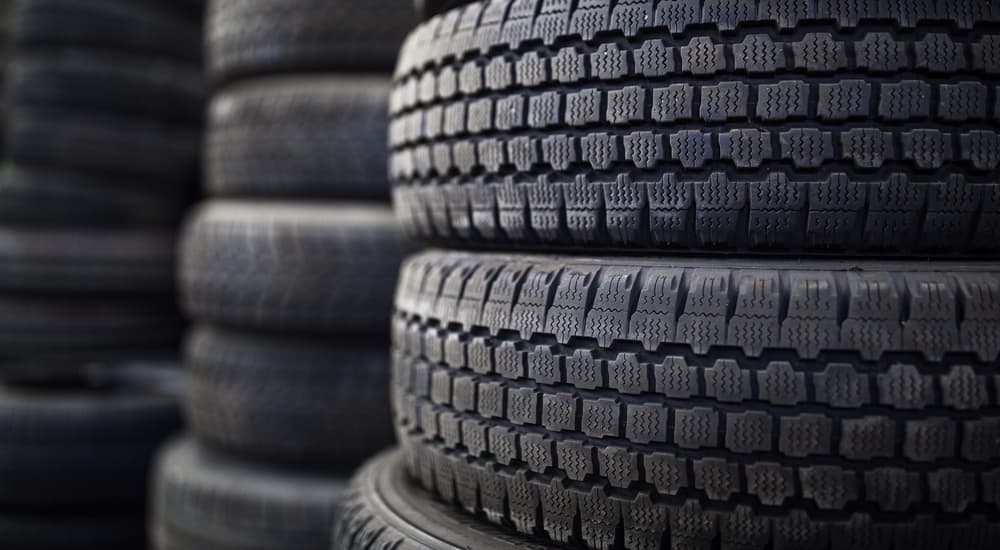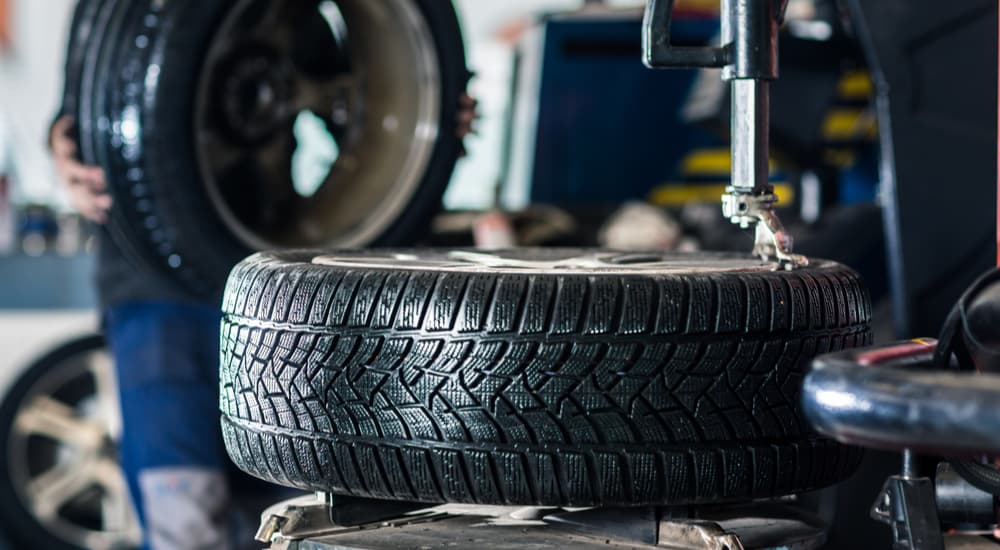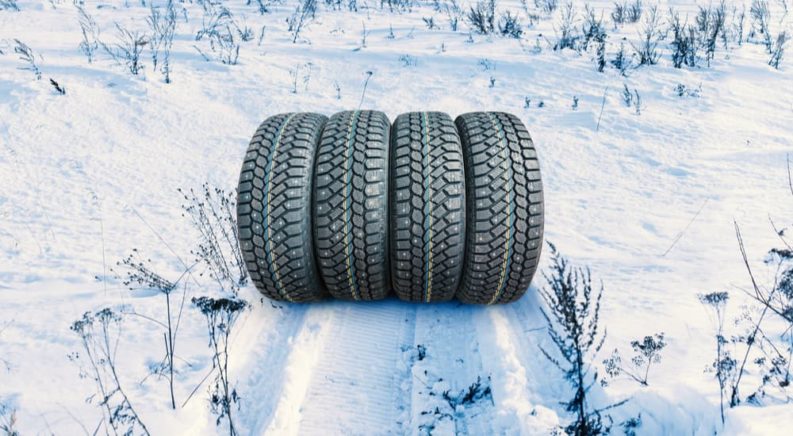There’s no denying that the tires on your vehicle are one of the most essential parts to maintain in great condition, no matter where you live or what your road conditions are like. If you’re in a place with rough winter weather, like the Midwest, then this becomes even more crucial as having the right tires in good shape can be the difference between getting to work and ending up stuck on the side of the road somewhere. There’s not much debate about snow tires vs all-season tires because they both do their jobs well, but it’s important that you know when to switch them and how to keep them in the best condition. Also, it’s important to know what can happen if you don’t take care of them.
Snow Tires vs All-Season Tires
Let’s start off by digging into the basics here to make sure we’re all on the same page. If you don’t have a ton of experience with car ownership, then it’s easy to assume that all tires are essentially the same, but the reality is that there are quite a few different types of tires you can put on your vehicle. Not only do trucks and large SUVs need different tires from something like a compact car, but you’re also not going to put the same tires on a family sedan as you would on a high-performance sports car.
The most common type of tire, which most people have on their daily-use vehicles, is an all-season tire. As the name would suggest, this sort of tire works well in hot, warm, and cool weather. It can handle dry roads and wet roads from rain and is a solid, run-of-the-mill tire designed to give you good traction in a wide range of conditions. These tires don’t do any one thing especially well, but they are just good for all-around use, as the name would suggest. You might’ve noticed, however, that I said they’re good in “hot, warm, and cool weather” – I didn’t say they’re good in cold, which is an important distinction.
Snow tires, also called winter tires, are specifically designed to work well in very cold temperatures and for dealing with snow and other winter road conditions. These tires have deep grooves and lots of texture to break up the surface area on them, giving you excellent traction in wet and sloppy conditions. They are great at handling snow and slush – the deep grooves scoop the snow off the road and sling it away as they spin, allowing for more direct contact between the surface of your tires and the road itself. Some of them also have studs built into them: small metal bits that can help break the ice on the road and allow for even better traction in the worst conditions, though these are somewhat rare and are illegal in some states.

Do I Need Snow Tires?
The simple answer is this: if you live in an area that gets snow in the winter, or the temperature regularly drops below about 45 degrees on average throughout extended periods of time, then yes, you need snow/winter tires. Even if you live somewhere that doesn’t get snow but is cold (like I said, below 40-45 degrees on average), then you still need to get winter tires on your car to combat potential slippage due to ice. This is because the rubber used in these tires is designed for cold temperatures.
Your tires might not feel particularly soft, but the rubber in them is actually pretty pliable – this is by design. When you drive, your tires will squash a bit, and this allows them to make better contact with the road and give you better traction and control. In the winter, however, if the temperature in your area gets down below about 45 degrees, and stays there throughout the day, then the rubber in your all-season tires gets hard and less pliable. This means it doesn’t grip the road as well as it should, and you lose traction.
Winter and snow tires are made using rubber that’s specifically formulated to remain soft and pliable even in very cold temperatures. Not only do snow tires help you maintain control on roads with snow and slush, but they give you better handling on dry roads when the temperature drops in the winter. So unless you live somewhere that stays pretty balmy throughout the winter, then you want to swap to snow tires. Every year, you can pretty easily guess which drivers didn’t put winter tires on their car: you’ll see them stuck in the snow on the side of the road or in the middle of the highway after they lost traction and went skidding off the road.
Replacing and Caring for Your Tires
Fortunately, you don’t need to leave winter tires on your car all year long; most people will swap between all-season and winter tires at the appropriate times of the year. You should consider the actual temperatures in your area to decide on when to swap your tires out. The simple rule to remember, however, is to put snow tires on your car sometime between Halloween and Thanksgiving when the weather turns colder and switch back to all-season tires around Tax Day (in April). This means you only need to use your snow tires about five months out of the year.
Changing your tires is something you can do yourself if you have the right setup at home, or it’s a quick and simple bit of maintenance that you can have done at your favorite service center. A lot of people use the tire change as an opportunity to get other work done, too, such as an oil change, tire rotation, or brake check. If you mark your tires when they’re removed to indicate where each one was on your vehicle, then you can have them rotated when they’re put back on by placing them on different wheels. Since your vehicle is already going to be lifted up to change your tires, it’s easy to have your oil drained and replaced and for your brakes to get checked.
Rotating your tires can seem like a hassle, and some people get the idea that it’s just a way for service centers to bolster their profits. Not rotating your tires on a set schedule, however, pretty much guarantees they’ll wear down in an uneven way. This means you’ll end up buying a new set of tires more often because they’ll wear out more quickly. Even worse, if you don’t rotate your tires, you might have a blowout occur as they wear down unevenly, and you don’t even realize they’re getting worn out.

Don’t Forget Your Alignment
While you’re getting your tires swapped or rotated is also a great time to have your suspension and alignment checked out to make sure it’s in good shape. Since you only use winter tires for about five months out of the year, a good set of them should last you several years, perhaps longer if you’re a particularly careful driver. If your suspension is out of whack, however, then your tires are going to wear unevenly, and that set of winter tires might only last you a single season.
Keeping your alignment where it should be also makes driving easier and more enjoyable since you’re not fighting against your vehicle. When your alignment is off, you’ll typically need to make a lot of minor adjustments every moment you’re on the road to keep your vehicle going straight. You might notice yourself compensating for a poor alignment, which makes driving a lot more stressful and can make it easier to veer into another lane or cause an accident. Proper alignment makes driving more fun, keeps you safer, and ensures your tires wear properly.
Get Your Tires Replaced When Needed and Care for Them so They Last
I should note, however, that no matter how well you treat your tires, winter or otherwise, you’ll still need to replace them eventually. Even if you only have them on your vehicle for one day each year, the rubber in your tires will naturally break down over time, and there’s nothing you can do about it. No matter how good your tires might look, even if they’re not particularly worn, still have deep tread, and seem like they could last you a lifetime, you should always replace tires after ten years due to aging. This is especially important if you have a recreational vehicle like an ATV or four-wheeler that you only use occasionally – the tires still need to be replaced. If you take good care of your tires and replace them as needed, you should be driving well for a long time, whether it’s with your snow battling winter tires or your trusty all-season ones.

